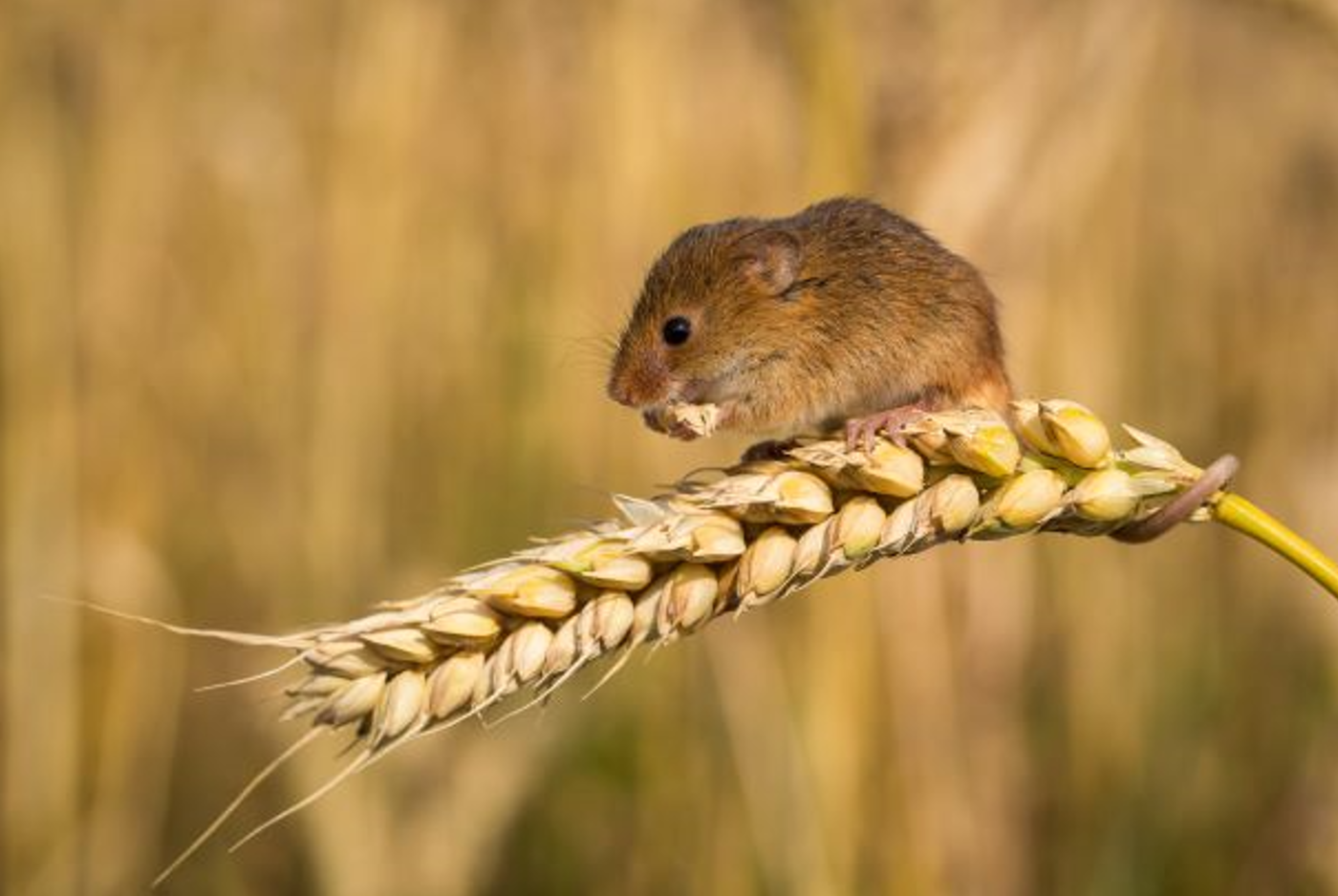This season has the potential to be the second consecutive major eruption of feral mice plagues across Australia and therefore vital you consider adding the management of mice into your property management and harvest plans.
Not only can mice cause havoc in the paddock, but grain storage facilities need to be well prepared and hygienic to avoid contamination. Moreover, the baiting of mice poses a serious threat to native wildlife and should be well planned to minimise collateral damage.
The use of second generation baits can have severe effects on multiple species throughout the food chain. While invertebrates and reptiles may be able to cope better with these second generation baits the flow on secondary poisoning of owls, wedge tailed eagles, malleefowl, phascogales, possum, dunnart, chuditch, as well as many other bird species and other animals can play havoc on the healthy functioning of the land.
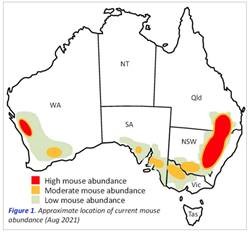
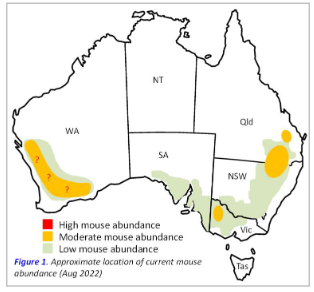
Approximate location of current mouse abundance August 2021 and 2022 (GRDC).
There are a number of non-chemical measures that can reduce mouse numbers coming into harvest including:
- Harvesting crops before they are overripe, to minimize pod shatter or grain loss
- Rolling standing stubble to increase the exposure of mice to predators
- Minimizing spilled grain in the paddock
- Reducing refuge and food sources through weed control and good farm hygiene
- Using seed destroyers – a combine harvester attachment that destroys weed seeds while you harvest
- Controlling weeds and grasses along fence lines and crop margins before seed set by spraying or slashing
Regularly monitoring mouse numbers and coordinating baiting programs with neighbours will allow well-timed, comprehensive and punctuated periods of baiting that are cost effective and lethal, minimising impacts on native assets like raptors, cockatoos, native mammals and reptiles.
Zinc Phosphide (ZnP) products have been approved by the Australian Pesticides and Veterinary Medicines Authority for use in broadacre cropping situations. When used according to the proper restrictions on the product, ZnPs have a short residence time in mouse carcasses reducing the risk of secondary poisoning.
Pre-baiting monitoring is legally required to establish if non-target species are observed feeding in the proposed baiting area. If non-target species are observed feeding, then the baits should not be used.
Hot tips to reduce the impacts of baiting with ZnP products:
- Follow the restrictions advice on the product packaging!
- Monitor for important native animals feeding/breeding near your baiting area.
- Monitor for mice, don’t lay baits “just in case” – using chew cards is an effective way of determining whether you have low, medium or high mouse activity
- Lay baits when there is least amount other food available to mice to increase the uptake – be prepared to bait before alternative food is available
- Use double-strength (ZnP50) baits where available to ensure a lethal dose is taken to reduce the need for follow-up baiting.
- Apply baits at night or in the early evening to reduce non-target poisoning by primary consumption.
- Continue to monitor both mice and native animals after baiting.
- Only spread baits in crops, not in pasture or closer than 50 m to native bushland.
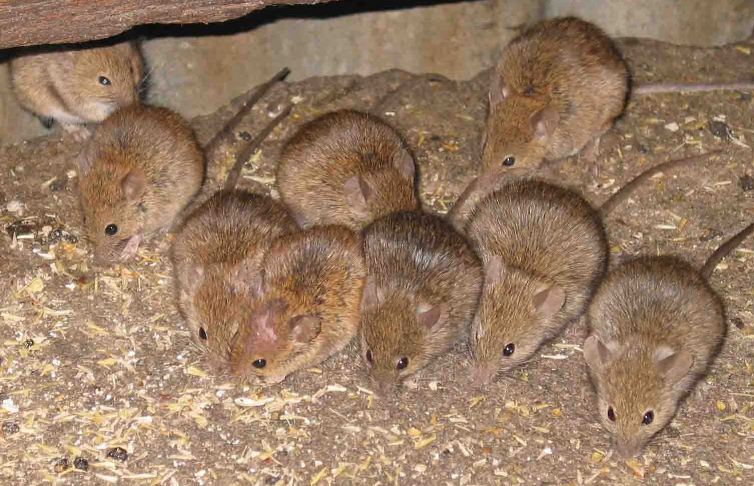
Zinc Phosphide, while considered to have lower risk to wildlife than other rodenticides, is toxic to the heart liver and kidneys when the gastric tract of the poisoned animal is consumed by predators. As zinc phosphide is used extensively in cropping landscapes this greatly increases the risk to birds of prey, whose diet often includes a significant number of mice. Secondary poisoning may kill some birds of prey outright, for those who receive a sublethal dose it can dramatically change their behaviour, putting them at increased risk of other causes of death. The signs of a sublethal dose consumed by a bird can include lethargy, weight loss and poor muscle control.
There is no antidote for Zinc Phosphide poisoning, but wildlife that have consumed a sublethal dose may survive with supportive care. Birds of prey are particularly susceptible to secondary poisoning.
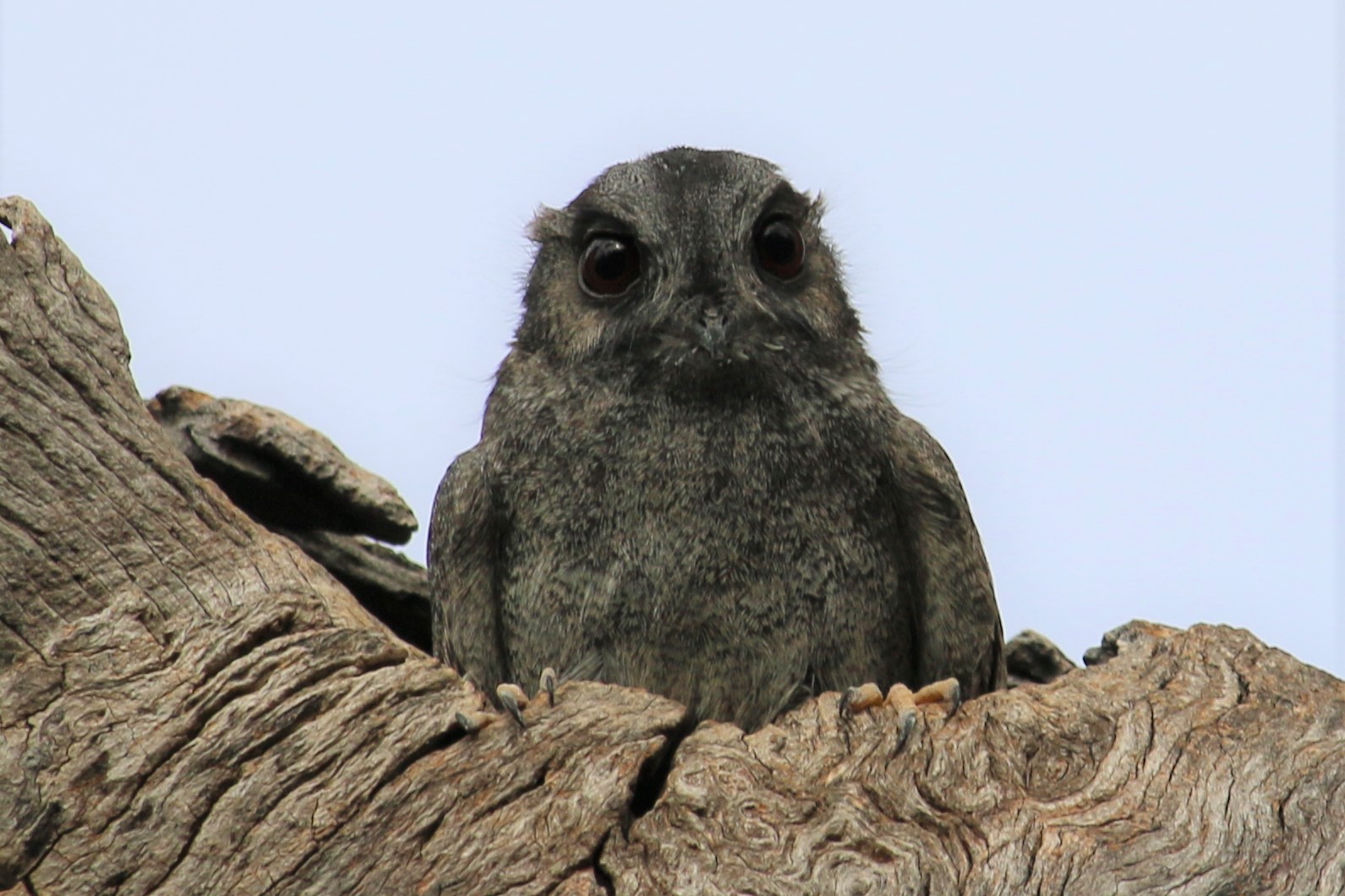 Symptoms of poisoning in native animals include lethargy, staggering, weakness, respiratory distress, vomiting, diarrhea, seizures and bleeding from the mouth or nose. To achieve a balance between optimum agricultural production and minimal harm to native wildlife, visit the following resources for monitoring and managing advice:
Symptoms of poisoning in native animals include lethargy, staggering, weakness, respiratory distress, vomiting, diarrhea, seizures and bleeding from the mouth or nose. To achieve a balance between optimum agricultural production and minimal harm to native wildlife, visit the following resources for monitoring and managing advice:
Feral Scan Mouse Alert: here
Diagnosing mouse damage in crops: here
Monitoring mice in Australia – August 2022: here
Best Practice Grain Storage Extension: here
Guidance on handling native wildlife in areas where zinc phosphide has been deployed: here
Animal Native Rescue: here
Marsupial Mammas and Pappas Wildlife Care: here


